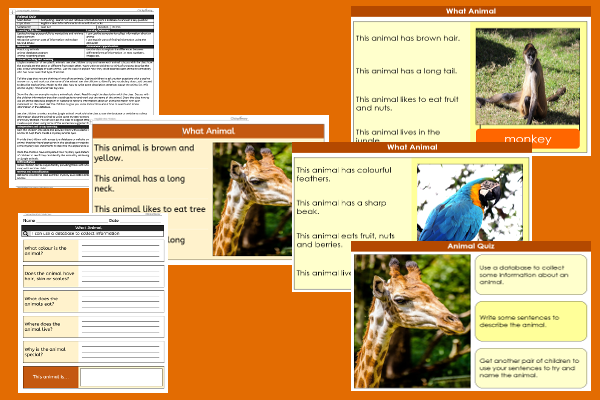Lesson Six – Animal Quiz

This computing teaching pack for Key Stage One gets the children to explain and model how to search for and retrieve information from a database to answer key questions about wild animals living in habitats around the world.
The class can prepare some database record sheets for other pupils to complete by researching the answers to key questions using a database about animals.
Download this teaching pack including a lesson plan, classroom activities and an interactive presentation to explain and model how to search for and retrieve information from a database to answer key questions about wild animals living in habitats around the world
Activities in this teaching pack include display posters to identify how to use sets of statements to classify different types of animals that live wild in the world and a template to select and record pieces of information that can be used to identify different wild animals.
The interactive presentation can be used to explore how to search for and retrieve information from a database to answer a key question about a range of animals living wild in the world.
This lesson is part of a computing scheme of work to get the children to explore how to use a computer database to store, organise and interrogate data and information about different animals that live wild in the world. There are teaching activities for shared learning, differentiated worksheets to support independent learning and interactive presentations to introduce concepts and key skills.
-

English Spelling Assessment
Assess abilities in spelling different vocabulary words based on the National Curriculum programmes of study for Key Stage One
-

Maths Measurement Assessment
Assess abilities in estimating, measuring and comparing a range of different measurements for length, mass and capacity
-

Family Life
Investigate and reflect on some of the special events and experiences that might happen in the life of a family
-

Final Sounds Word Guess
Practise playing some guessing and matching games to identify the spelling and meaning of words with different final sounds
